Having the proper gun & gear for a shotgun class can be the difference between success & failure.
Spending another $100 to ensure proper learning is well worth the cost.
I don’t have a lot of mileage with shotguns, but I took a two day shotgun class once with the wrong shotgun and I will forever remember the frustrations of not having the right gear.
See, in a lot of these classes, they try to make the shotgun into a rifle doing a “select slug drill”. I showed up to class with a “saiga 12” (magazine fed semi-auto). I was totally bored; while everyone else was having a great time doing all these cool “drills”.
So, here I’m faced with the same dilemma, come to class with the non-ideal system?
No, I don’t think so!
So, I have a Mossberg 590, that is pretty darn good, except it doesn’t have a ghost ring rear-sight. I had hoped to get by with a reddot optic, but after testing several slugs in prone. I discovered I have to raise my cheek too far off the stock to see the optic properly.
PROS of 590s
- 8+1 capacity
- reputation of being robust and rugged. (Military selected system).
- tang safety is in the right place, easy to put on/off and fire quickly.
CONs of 590s
- My 590 is very difficult to add a frontsight. It requires brazing, soldering or welding onto the barrel.
- Instructor much prefers the 870.
Here is the instructors shotgun(less the pistol grip).
Being tall and wanting to do a reddot, I need a higher-cheek. Taller people need a longer length-of-pull.
So, this is the system I’m going to buy (once I sell my 590).
PROs of this 870
- good price point
- adjustable length of pull (without a wobble/cheapo telescoping stock – ok for 556, but not for full recoil 12 ga).
- non-black
- ghost ring & rail…from factory
- light mount “slide”.
- removable “choke”
- trunk of tree – standardization, common “operating system” for learning in a class.
CONs of the 870
- only 5+1 capacity
PROs of 590
- $540 ish
- 8+1 capacity
- tang safety
- only shotgun to meet military requirements
CONs of 590
- In pistol grip configuration, getting to the safety is very time consuming.
GEARING UP FOR A SHOTGUN CLASS
to launch slugs, you MUST have rifle sights, like “ghost ring sights”(you’ll want ADJUSTABLE height & windage)
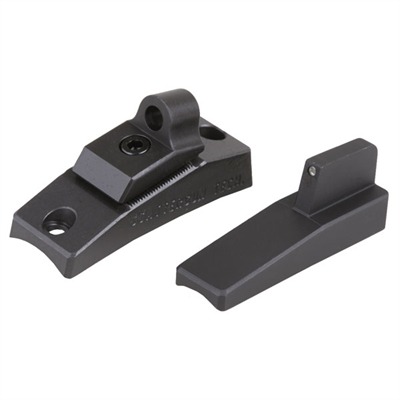
Here is AN OPTION:
Personally, I’m not too much into shotguns, thus I’m going with a reddot. If I want to launch slugs, I’ll launch a 308 🙂
Shell Caddy
forward sling mount
* 00 buck
* slugs
* bird-shot
Defense Shotgun Recommendations
By Doc Gunn
The following is a combination of several emails from Doc Gunn.
3/. Hi-viz, anti-bind magazine follower.
4/. Police forend.
5/. Swivel stud on rear stock.
6/. 1-1.25″ nylon carrying strap, attachable via a Scattergun Technologies side
front swivel mount that is held between the magazine tube and the extended
magazine cap.
7/. Short Stock: lop between 12.5 and 13.0″
8/. #36 Weaver base attached to right forearm at 2-3 O’Clockposition for
mounting a Streamlight or ITI M3 LED weaponlight.
Select Slug Ammunition (1-ounce, full-power in a shell casing of a different
color and texture than our carry Buckshot) attached to the rear stock via a
simple elastic shell holder.
Weapons in Cruiser/Patrol Ready with 5 rounds of Federal H132 00 in the magazine tube.
This allows for insertion of any additional round (Buckshot or Slug) into the
magazine tube and simply racking to “Select Slug” via the LAPD method. (H132
00 patterns ideally, tighter than F132 00, but more open than LE132 00,
optimizing the shotgun’s Zone B range.)
The Shotgun:
The shotgun is a unique weapon as it can shoot multiple or single projectiles. Firing birdshot, it may take game birds at ranges to 40 yards, depending upon choke and shot, and is therefore an indispensable survival weapon. For defensive purposes, only larger buckshot and slugs are useful. These are best fired from a shotgun with a smooth bore (rifled bores cause rotation of the shot column and unusable patterns) with rifle sights. With slugs and rifle sights, the smooth bore shotgun may be used as a substitute rifle out to ranges of 80-85 yards. The optimal operating range of the defensive shotgun with buckshot is from muzzle to 15-20 yards using a tightly patterning load of 00 or 000 buckshot.
Improving Buckshot Patterns:
There are three ways to improve (tighten) buckshot patterns:
1/. Ammunition Selection. Hardened, buffered shot at slower (“Tactical”) velocities tend to pattern tighter due to less deformity of the shot. Federal Tactical is a good example of this, although Louis Awerbuck states that their performance diminished after Blout bought Federal in 1997. Alliant Techsystems bought the company in 2001 and is trying to improve the quality once again. Louis currently only recommends Hornady Tactical or Estate. Low recoil 8-pellet loads (Remington Tactical) are not reliable in autoloaders.
2/. Vang Comp Barrels. Alterations to the factory barrel consist of lengthening the forcing cone, back-boring the barrel, and adding compensating ports. Stock Benelli & Beretta barrels are too thin and overbored. They will not accept the Vang Comp System. A completely new and specially built barrel is custom made for these autoloaders. Complete barrel assemblies (with or without compensating ports) are also available for most shotguns, including the Benelli. Cost of the Van Comp process (without ports) on Remington barrels is $165.00. A complete Van Comp Remington barrel assembly with tritium ghost rings and porting costs $475.00
3/. Wad Wizard. Formerly known as “Patternmaster” this choke tube momentarily retards the wad resulting in tighter patterns similar to the Vang Comp. It may be used on any shotgun for which it is made and includes the Benelli. It only works for buckshot or birdshot using a plastic wad. It has no effect upon loads that use fiber wads such as those made by S&B. It has no effect upon slugs and only Foster slugs are recommended. Retail cost is $105.00.
Wad Wizard also offers a shorter tube that allows for a pattern that is not as tight as with their original. It is called their SWAT (Supreme Wide Area Tube) and allows for a more normal dispersion but still retards the wad resulting in more uniform patterns with fewer flyers. I have come to appreciate some distribution of pattern in a fighting shotgun and so prefer this tube to the tighter one or the Vang Comp process.
Reliability of Benelli Autoloader with Low Recoil (Tactical) Ammunition.
John Farnam does not like low recoil buckshot or slugs in autoloaders such as the Benelli Super 90 or the Remington 11-87. It is known that low recoil buckshot tends to pattern tighter but provide less penetration of objects such as automobile sheetmetal when compared to full power loads. They may also compromise reliability in autoloaders. It is also known that 8-pellet 00 loads (Remington) are not reliable while 9-pellet are more reliable. Some individual guns may prove reliable while other examples of the same model will not. It is necessary to thoroughly test your individual gun with the particular ammunition before depending upon it for a defensive weapon.
Personal observations using my Benelli and reloaded birdshot shells are as follows: It will not function using 1-ounce loads at 1150 fps (2 ¾ Dram Equivalent.) It is reliable using 1 1/8-ounce loads at 1200 fps (20.6 grains of 700X or 3-Dram Equivalent.) It is reliable with Federal Tactical 00 Buckshot (LE132 00.)
Louis Awerbuck’s comments upon the reliability of the Benelli with low-recoil loads are as follows:
“Your gun should be able to cycle light birdshot, though as you are aware, that ability differs from gun to gun with quality control and company ownership. A few things that we have found which impact the ability to cycle light birdshot are: a dry gun (use auto transmission fluid as a lubricant); a barrel out of line because of the magazine tube/barrel clamp; use of a SureFire foreend (these are great lights, but on some Benellis the specs are out a little); an over-tight trigger group screw; and a fully loaded SideSaddle (upsets the balance).”
Short Stocks:
The stocks on defensive shotguns are too long for most people. These weapons are aimed like rifles, not pointed as when wing-shooting. They should have a 12.5 – 13” length-of-pull for the average shooter.
Often the length-of-pull is limited by the recoil mechanism of autoloaders as it is in the stock. Pump-operated shotguns may be as short as 12”.
The length-of-pull of the following instructor’s personal shotguns is as follows:
Jim Crews: 12.5” on his Remington 11-87.
Louis Awerbuck: 12.5”.
Vicki Farnam: As short as they were able based upon the recoil mechanism of her 11-87.
Choate makes a synthetic replacement stock for Remingtons and Benellis. It has a recoil pad and spacers in different widths from .25-.75” that can be used singly or in combination. It is said to measure a length-of-pull of 13” with only the recoilpad in place, but actually measures 13.25”. I purchased one for my Benelli M1 Tactical Super 90 and had a gunsmith reduce the length as much as possible but still maintain the ability to use the spacers and recoilpad. It now gives a true 13” length-of-pull. We also rounded the top of the recoilpad to make it less likely to snag.
I also shortened the rear stock of a Remington 870 Wingmaster to yield a lop of 12.5”. It is excellent.
Testing Data:
Benelli with IC (improved cylinder) choke with Federal Tactical 00 (1997 manufacture.)
07 yards: 9/9 in 2.75″ (Wad struck target.)
10 yards: 9/9 in 7″ (Wad struck target.)
15 yards: 9/9 in 8.125″
20 yards: 9/9 in 13.25″
25 yards: 8/9 in 18″ (One pellet off silhouette.)
Full power Federal 1-ounce slugs (F127 RS):
Sighted from sitting position at 50 yards: 3-shot group of 4.5″, point-of-aim.
Confirmed Zero from Off-Hand at 25 yards: One round, dead-center hit. (Wad also struck target less than an inch from the slug!)
Trajectory of 1-ounce slug @ 1600fps:
025-yards: +0.5″
050-yards: Zero
075-yards: -2″
100-yards: -6″
125-yards: -12″
Often not having the luxury of taking time to set up in a formal stance, we shoot all our weapons from any and all positions. The short longarm stock permits this, whereas a longer stock may not. (Try laying on your back then turning to engage in various directions.)
A short stock allows the shooter to get squarely behind the gun so recoil is directed straight back into the “shooting pocket” of the shoulder. This coupled with an exaggerated forward-leaning stance while pulling the shotgun into the shoulder to maintain contact all but absorbs recoil into a shove rather than a strike. A serendipitous advantage of pulling the pump-shotgun into the shoulder with both hands [LM may disagree, according to SG1 lecture] is that the slide will release as the shot is fired and begin you on your racking the action for the follow-up shot!
With nearly non-existent recoil shooting a .223, we’ve gotten away from the necessity of using this shooting pocket, even to the extent that we shoot with only the toe of the stock high on our chest! Do NOT do that with a 12 gauge 1 ounce slug!
How short a stock may be is usually influenced by the mechanisms in the stock itself. A gas-operated 1100/1187 has a recoil spring in the stock whereas the pump–action 870 does not. The LOP of my Benelli and 1187 is 13.0″, while my 870 is 12.5″. I use them with or without body armor or a thin FIELD GRADE PAST recoil pad (this last trick taught to me by Friend Larry Mudgett during an early shotgun course when shooting slugs.)
Another caution: (870 feed issues)
Be sure there are no “dimples” in your 870 (1100, 1187) magazine tube, or they’ll hang-up and cause a miss-feed. The dimples were added (in the 80’s?) to allow a plastic retaining cap to contain the spring in lieu of the previous slit steel plug that so often flew out and across the room (or into your face) when one tried to pry it out. These dimples MUST be removed to allow the shell follower and spring unrestricted movement. I use a Dremel tool to make it completely smooth, then polish it with felt or a fine emery cloth. Blue the area when you’re done.
************ ********* ********* ********* *******
We’ve just added our first GG&G Forend Tactical Light Mount. It’s easy to install and a bit of light from a TLR-1 illuminates your front sight as an extra bonus. It is much easier than to mount a #36 Weaver base at this same 3 O’clock position, and much more durable. The only draw-back is that it costs between $75.00 and $90.00, rather than $3.00.
http://www.gggaz. com/index. php?id=234& parents=60, 152
I just found out Midway has them on clearance for $61.35! RECOMMENDED!
http://midwayarms. com/viewproduct/ ?productnumber= 866614
There are two bad words in Shotgunning: “Three-inch” and “Magnum”. I avoid them both.
I’m convinced that the secret to recoil reduction is a short stock, pulled firmly into the operator’s shoulder pocket, his mass squarely behind the gun and his body leaning forward.
Very short stock use; requires the shooting thumb placed on the same side of the stock, NOT crossed over the top, or you WILL hit your nose! Think of a right-hander shooting with his right thumb on top of where a Rem 700 safety would be. I’ve outlined this area on my 12″ LOP gun to remind another shooter of this should he pick-up and shoot my gun, which I’ll name “Straight Thumb.” (Like “Tom Thumb” or “Jo-Jo”: a shotgun with this much character needs to have a name.) Pistol-gripped stocks prevent use of the stright thumb.
I’m coming to the conclusion that 13″ is probably the optimal LOP for a defensive shotgun, fitting almost all individuals well when dressed in normal clothing, and still serviceable for wing-shooting, as if that was important! My old 870 has a 12.5″ LOP and works great. The new 12″ LOP 870 is a pure fighting shotgun, well-suited to body armor and a variety of unusual shooting positions. It requires a Straight Shooting Thumb, hence it’s name.
TacStar +2 with QD sling swivel $35
Fiber optic rifle sights $28
1.25″ Black nylon sling $10
Two 1.25″ QD sling swivels $8
Shortening barrel and removing mag tube dimples $0
Rebluing muzzle and ground areas of mag tube (Cost of Gun Blue) $5
“Si vis pacem, para bellum.” ^
Doc Gunn, Inc. / DTI-RNK
P. O. Box 73
Daleville, VA 24083
“Willingness is a state of mind. READINESS is a statement of fact!”





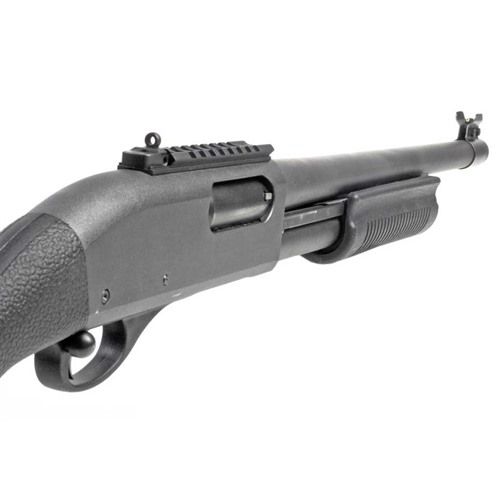
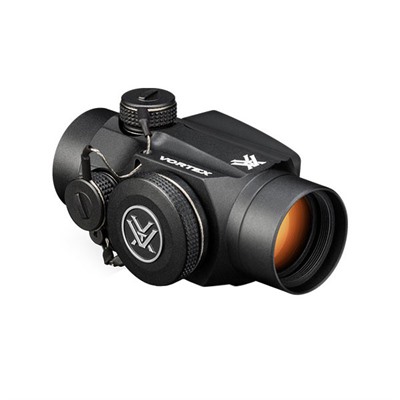
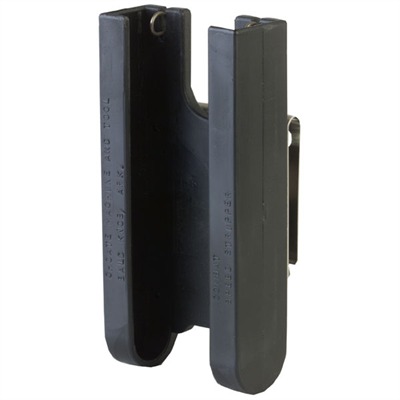
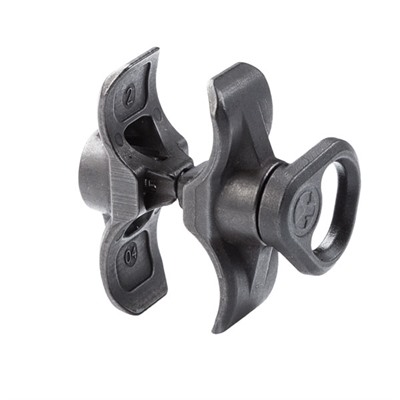
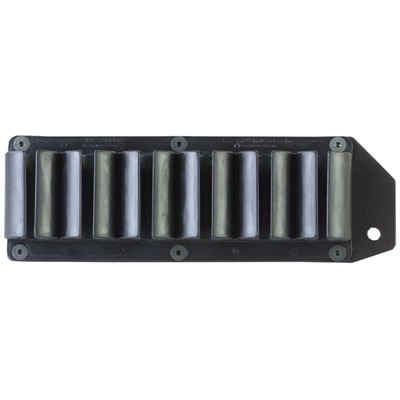


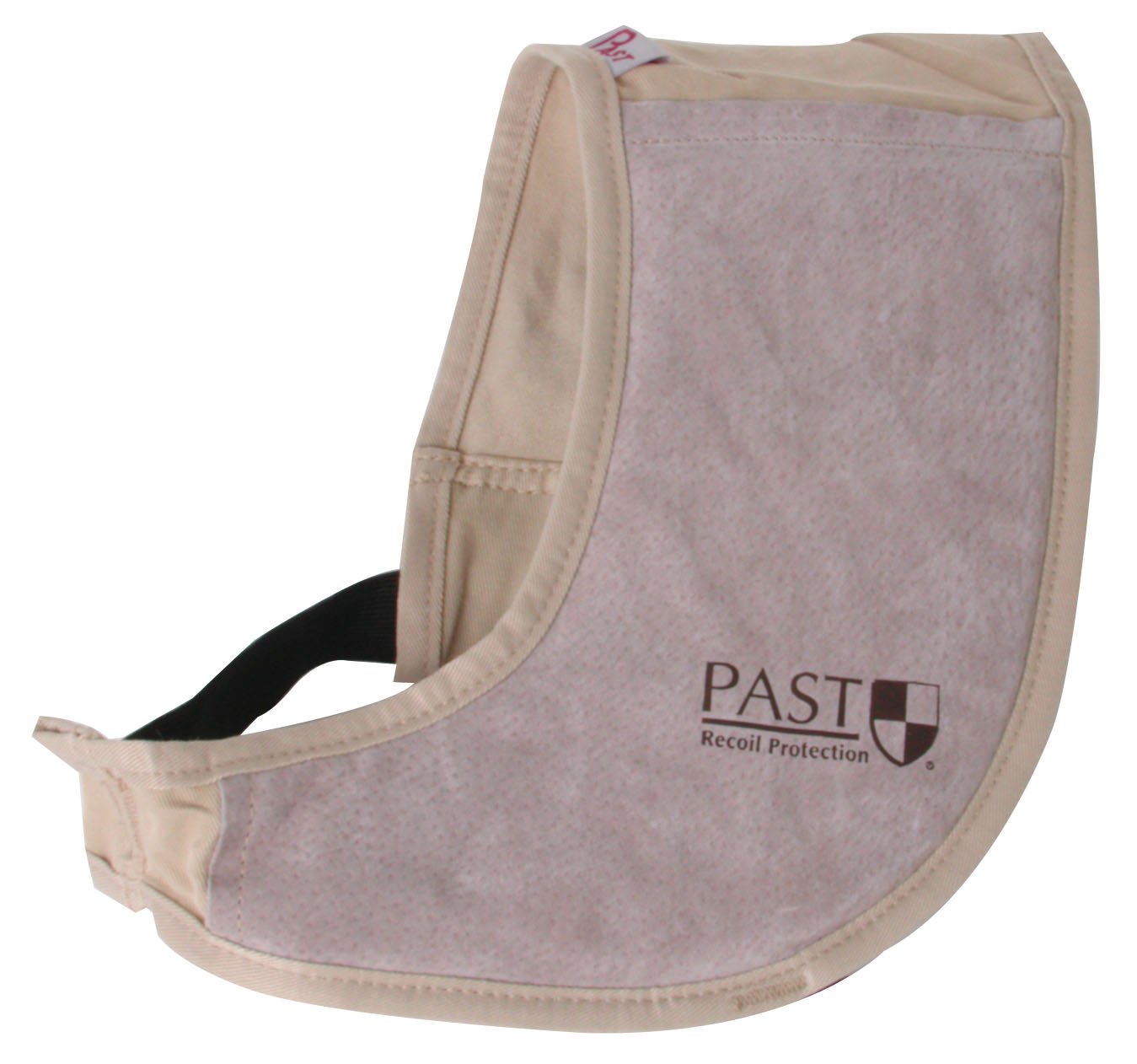
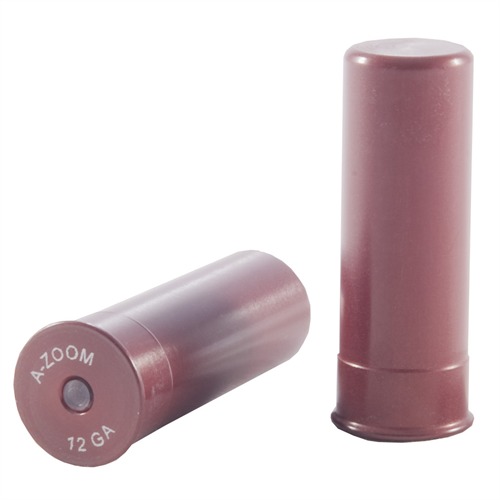

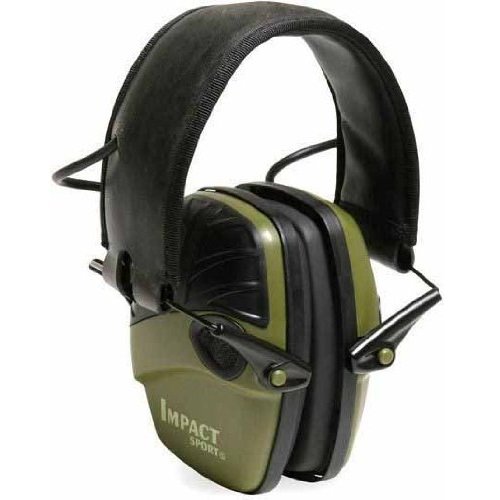
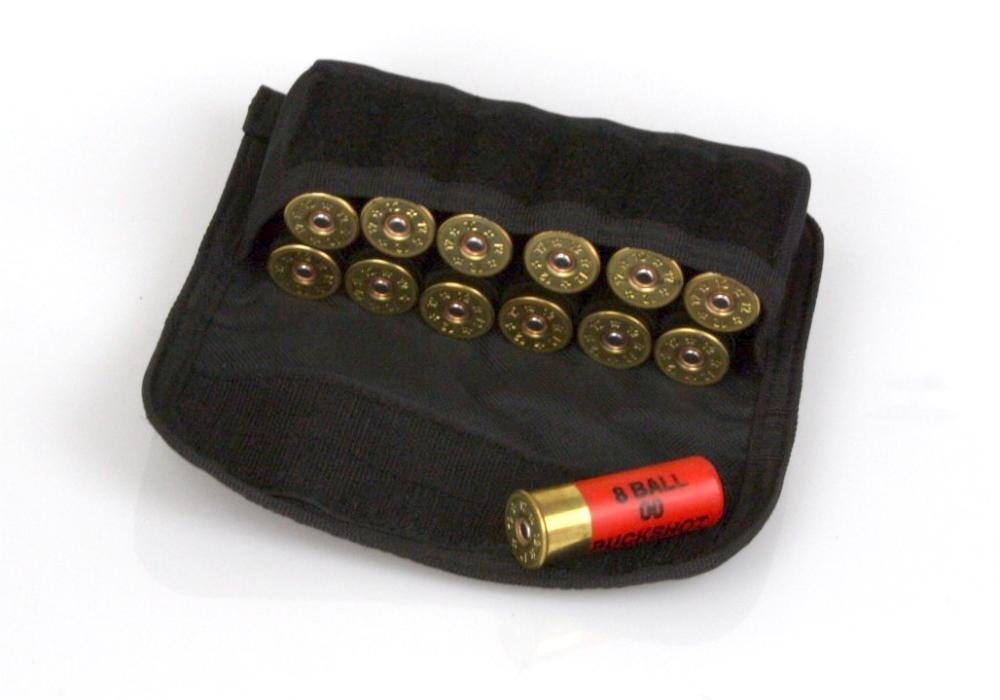
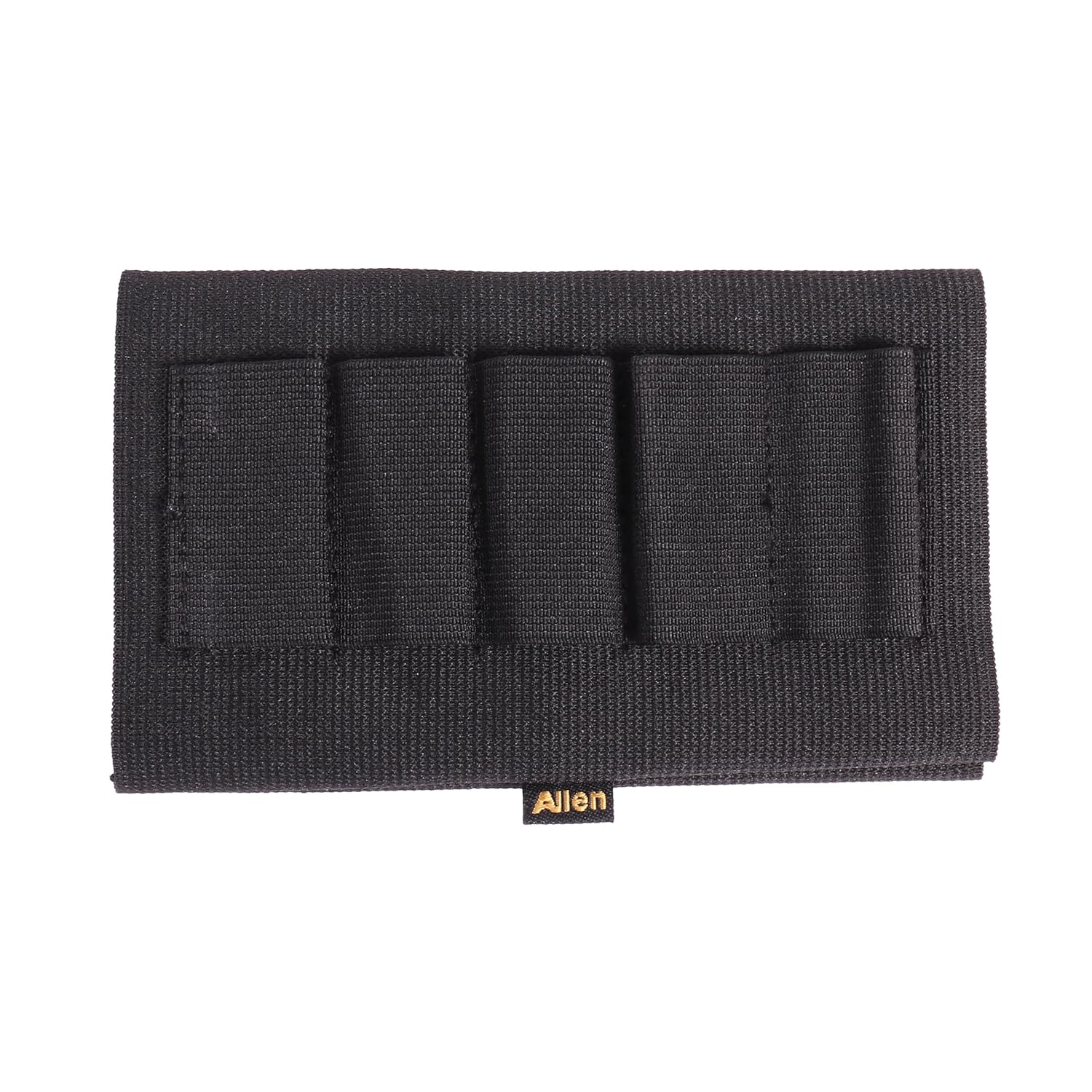

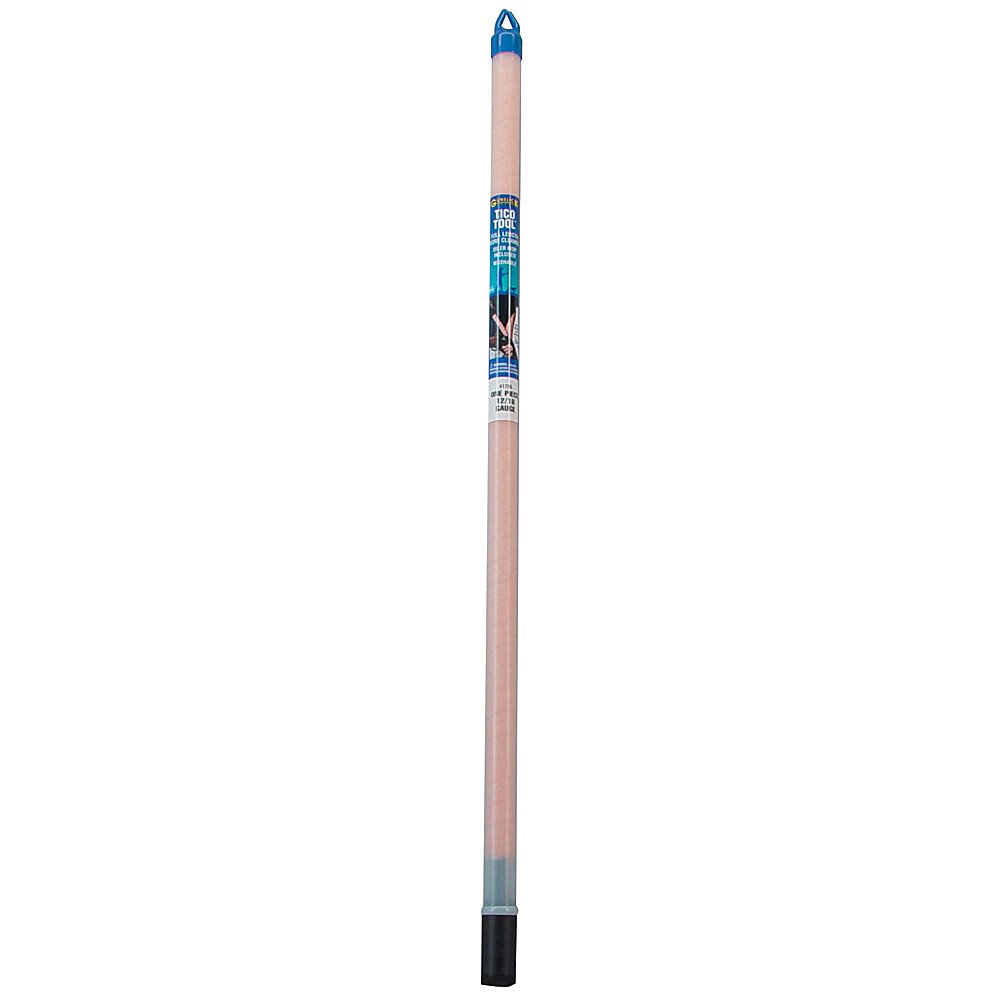



Dear Brother Thomas: (You may post this comment.)
I did not say that I pull a shotgun into my shoulder with both hands. I actually apply slight forward pressure with my forward hand and pull the stock into the shooting pocket of my shoulder with the strong hand. This “taffy-pull” seems to further tame recoil to some degree.
Keep Spreading the Sunshine.
Best!
Doc
Do NOT use a bracket/brace/connector between an extended magazine and your barrel or it will change the point-of-impact of your slugs unless you use a torque wrench to tighten the retaining bolt each time you dis/re-assemble.
Friend Louis Awerbuck taught this to me several years ago. I removed all such clamps from my extended magazine defensive shotguns, even the ones that came so supplied from the factory. Occasionally check to see your extended magazine is still snugly tight during extended training sessions. (They always are.)
I love shotguns, but not as much as I love rifles!
Doc